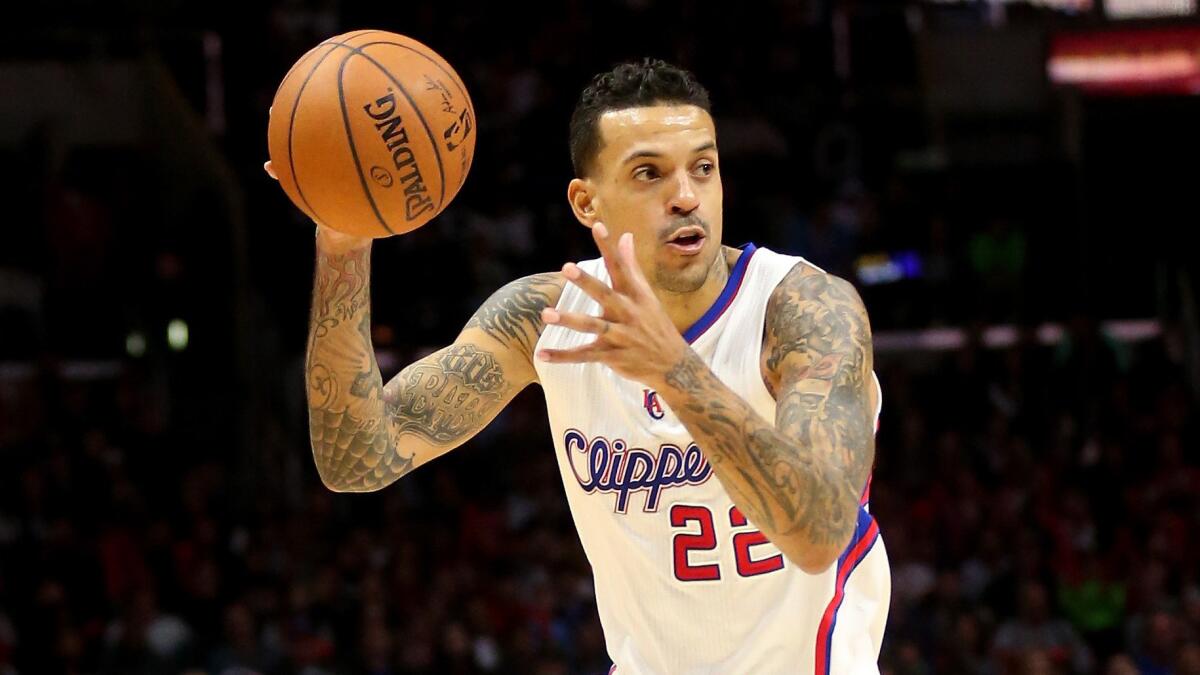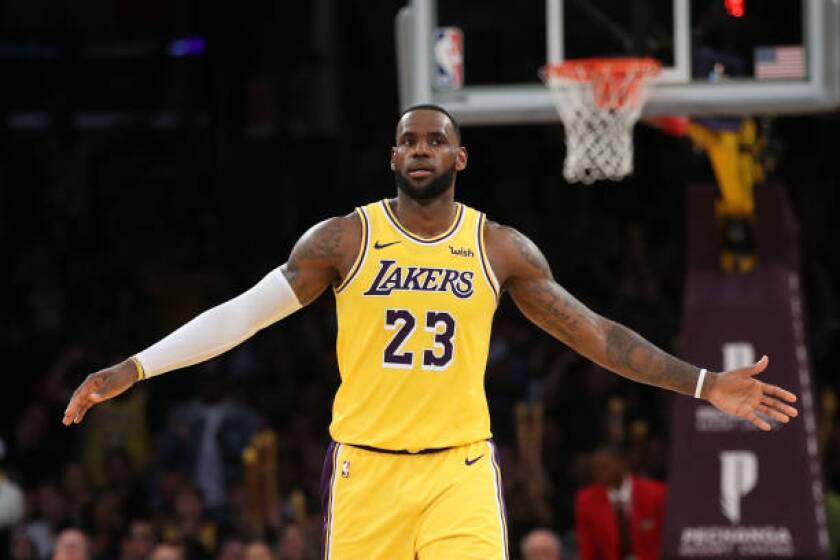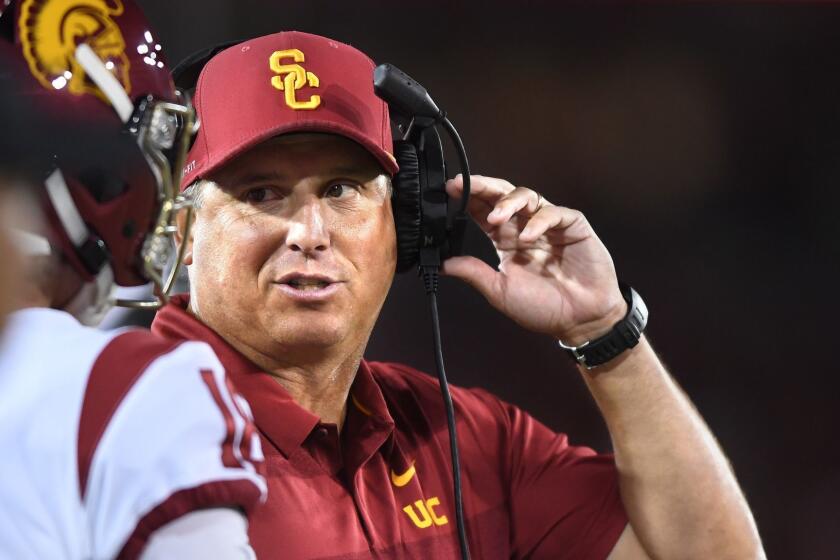Column: Sports leagues will need to revisit cannabis rules as more states legalize weed

- Share via
My name is LZ Granderson and I smoke pot. Not in a wishy-washy/Clintonesque “I didn’t inhale” sort of way, but rather in a depending-on-what-time-you-are-reading-this-I-could-be-high-right-now sort of way.
Because I’m a black man of a certain age with a head full of locs, this proclamation could easily be met with a cynical shoulder shrug followed by “of course you smoke pot, look at you.”
And although I treat cannabis with the same respect and caution as I do alcohol, I’m sure there are some readers who are disappointed the Los Angeles Times would publish such a statement because, in their eyes, it undermines credibility.
It’s for these and other reasons that when I’ve found myself in mixed company I’ve been far less prone to chat about cannabis than alcohol, political affiliation or even religion. My experience is that other professionals are similarly hesitant. Stereotypes are a lot of things, including debilitating. But I’m one of roughly 900,000 people who use cannabis in Los Angeles County, an increase of 3% from 2005 to 2015, according to a county report.
However, four-time NBA champion John Salley isn’t crippled by the stigmas still associated with pot use. Recently, Salley — who won championships with the Detroit Pistons, the Chicago Bulls and the Lakers — was announced as the new executive vice president of marketing for Leading Edge Pharmaceuticals. The company develops topical CBD-based products, which Salley has used to treat chronic pain that has kept him up at night post-career.
Former Cleveland Cavaliers general manager David Griffin says trying to build a roster around LeBron James made him miserable.
Later this year, he and his 22-year-old daughter, Tyla, will launch the premium cannabis business Deuces 22, which includes an online “academy” designed to educate site visitors on the plant’s benefits.
Salley, vegan and a health enthusiast, is the latest high-profile former professional athlete to take a hit off a business opportunity expected to gross upward of $70 billion globally by 2030. Joe Montana, Tiki Barber, Matt Barnes, Al Harrington and Mike Tyson are just a few of the names attached.
The professional leagues from whence they came, however, continue to test and punish players for use. No professional sports league has allowed its players to use marijuana for medicinal purposes.
One can only assume they will do so until cannabis is decriminalized at the federal level. To be sensibly proactive would either put them at odds with the government or sponsors who may be hesitant to spend money on a league full of pot heads.
“Stereotypes are developed by people who already have prejudiced views,” Salley told me. “When you think about the prejudices regarding athletes, you have the story of a lot of guys who go broke when they’re done playing. People think: Well, they came from nothing and now they’re back because of drugs and what have you and that storyline gets perpetuated.
“What you don’t hear about is all of the predators in professional sports who take advantage of guys and are allowed to keep working in sports despite not looking out for the best interest of their guys. We have a lot of bad people involved in sports, but we like to do the stories on the broke black athlete smoking pot. Not the people trusted to advise them.”
Salley is lightly touching on the narrative notoriously written into the culture’s collective consciousness by California’s own Richard Nixon via his war on drugs. The public was told it was about safety, but what his administration actually wanted was “the public to associate the hippies with marijuana and blacks with heroin. And then criminalizing both heavily, we could disrupt those communities,” according to Nixon’s domestic policy chief, John Ehrlichman.
“We could arrest their leaders, raid their homes, break up their meetings and vilify them night after night on the evening news,” Ehrilchman said in 1994, according to a 2016 Harper’s Magazine article. “Did we know we were lying about the drugs? Of course we did.”
Ehrlichman died in 1999, and his children challenged the validity of the quotes when they were made public. However, if you listen to the Nixon tapes in which the president waxes poetic about how “every one of the bastards that are out for legalizing marijuana is Jewish” and that “homosexuality” and “dope” were part of a Communist and left-wing plot to destroy the country, you might believe the Harper’s story.
Regardless of the war on drugs’ controversial beginning, the reality is a lot has changed since former NFL player Ricky Williams first talked about using cannabis to help him manage his anxiety. Back then he was ridiculed. Today, it is clear he was ahead of his time.
In 2000, during Williams’ second year, a Gallup poll found that just 31% of Americans supported legalizing marijuana. That percentage is now 66%.
Just as the country’s attitude toward alcohol changed after Prohibition ended in 1933, the sweeping wave of voting initiatives legalizing pot is a clear indication that the professional leagues need to move beyond studying the issue. They can say they’re “following the science,” but that’s a cop-out. If that were true, alcohol and opioids would already be banned.
Instead of being overly cautious cowards they should catch up with their athletes, fan base and the rest of the country.
Barnes believes the problem with athletes being associated with cannabis isn’t the plant but rather what the public knows about it.
“Don’t get me wrong, I enjoy getting high,” Barnes said. “But I really think what we need to do as a society is to educate people. So my hope now is to remove the high aspect and give people the beneficial and the educational piece and really make people understand. I mean, a majority of the population doesn’t know the difference between CBD and THC. That CBD is more the anti-inflammatory recovery wellness body stuff, and THC is what gets you high.
Clay Helton’s future at USC hinges greatly on the Trojans showing a marked improvement in 2019 following last year’s 5-7 campaign.
“Now, I know being an athlete, being a father, being a coach, you really have to be careful. ... I have 10-year-old twin boys that look at my every move. And it’s a conversation I’ve had with them. I remember one night, I put them to bed and then I went in the backyard and smoked a joint. One of them said he looked out the window and saw me. So the next morning, he came out like, ‘Daddy, why are you smoking cigarettes?’ And I was just like, ‘What are you talking about? I don’t smoke cigarettes.’ They’re like, ‘Well, we saw you smoking last night in the backyard.’ I was like, ‘Oh ...’ So I was at a real crossroads. Do I lie? What do I do? So I just told them.
“It was the year I won a championship. I’m still limping around. My ankle’s really sore. My knee hurts. My back hurts. [So I said] ‘Daddy doesn’t like to drink alcohol or take pills. So when Daddy smokes a joint, it makes all my pain go away, and it helps me sleep.’ And then one of the twins said, ‘Well Daddy, you know my ankle and knee hurt. When can I smoke?’ And I was just like … it’s when it kind of got real. I’m just like, ‘You can’t smoke until you’re about 30.’ He was like, ‘Oh. When I get really old, I can smoke?’ And I just kind of had a little laugh.”
Barnes may have been able to find humor in the situation, but for Earl Watson there’s not much to joke about. The former NBA coach and UCLA alumnus says his concern about players being open about their marijuana use isn’t about kids like Barnes’ twins, but rather those who don’t have the same resources.
“It’s not a secret that lower economic communities tend to end up incarcerated versus the obvious non-criminalized options of therapy, “ Watson said.
Watson said inmates convicted of marijuana offenses should be released before a state could legalize marijuana use and sales. He added that, “professional athletes will have a responsibility to perform at a high level by being disciplined if they choose to use marijuana, reflecting the same responsibilities as alcohol use.”
How the athletes show they are using responsibly is paramount. I still play pickup basketball fairly often for a middle-aged guy, and let me tell you, it’s hard to find a court without a young guy taking ill-advised three-pointers, trying to imitate Steph Curry. If the two-time MVP started promoting pot, it’s safe to assume some of those mediocre shooters would follow suit.
This is why the leagues need to be transparent about demystifying cannabis rather than hiding behind the justification that “it’s the law” — the laws are changing.
This spring, Illinois became the 11th state to legalize recreational and medical marijuana — the first to do so through the legislative process. Officials project upward of $2 billion in sales leading to roughly $500 million in revenue for the state, which has the Chicago Bulls, Bears, Blackhawks, Sky, White Sox and Cubs.
If NBA Commissioner Adam Silver thinks tampering with pot is difficult to discourage, how will he continue to justify punishing players for partaking in a product a growing number of his league’s alumni are getting rich off of and producing with the governor’s blessing?
It’s borderline comical and downright embarrassing to watch these powerful entities continue to wring their hands over antiquated policy. Especially considering it all may very well have started because an anti-Semitic racist didn’t like hippies.
More to Read
Go beyond the scoreboard
Get the latest on L.A.'s teams in the daily Sports Report newsletter.
You may occasionally receive promotional content from the Los Angeles Times.













